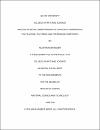MOLECULAR LEVEL UNDERSTANDING OF NANOCLAY DISPERSION IN POLYSULFONE, POLYIMIDE, AND THEIR BLEND COMPOSITES
الملخص
Polymer composites based on polysulfone (PSF) and polyimide (PI) are used as membranes for gas separation and water purification applications. However, structure composition related issues limit the performance of the used films in those applications. Consequently, the use of nanoclays as reinforcing agents in polymer films can be essential for the membrane’s optimal performance. In this work, we will study the effect of a nanoclay, Cloisite 30B, on the dynamics of chain motions of the PSF and PI polymers. Characterization of the PI/PSF/Clay composites will be carried out using the broadband dielectric spectroscopy, SEM, gas separation analysis, and dynamic mechanical analyzer techniques.
The main goal behind this study will be understanding chain relaxation behavior in the glass transition (Tg) and the sub-Tg regions. The impact of the clay on the gas barrier and gas separation properties will also be investigated. Dielectric spectroscopy is a powerful tool to characterize the composites for the following reasons: (1) Polymer chain dynamics related to glass transitions and secondary motions can be studied. For example, two glass transition temperatures would reflect a 2-phase system and this information is related to phase separated morphology results. (2) Distributions of relaxation times can be used to study microstructural heterogeneity within the blend.
Insertion of clay is expected to alter the dynamics of the glass transition temperature and secondary relaxations of polysulfone and polyimide composites. Therefore, clay would alter free volume within the composites and affect the physical aging phenomena in membranes, and thus, their performance in gas separation applications.
DOI/handle
http://hdl.handle.net/10576/5113المجموعات
- علم وتكنولوجيا المواد [68 items ]


